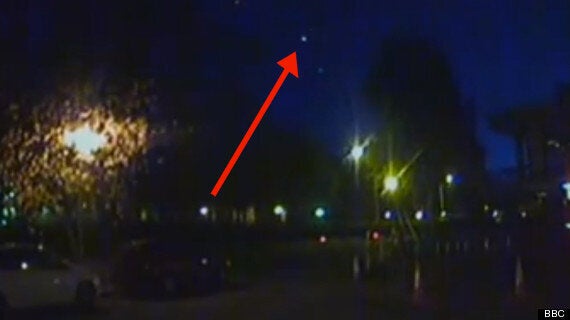Did you see a green-tinged meteor flash across the sky on Wednesday night?
Witnesses have reported seeing the "fireball" shoot over England and Wales in a northerly direction at around 9.45pm.
Experts believe the meteor might have formed from debris from Halley's Comet.

CCTV captured the meteor streaking across the skies on Wednesday night
Many observers took to Twitter to report the phenomenon with sightings apparently recorded in Cornwall, Hampshire, Lancashire, South Wales and Worcestershire.
Suzy Buttress, of Basingstoke in Hampshire, said she spotted the celestial body while driving along the M3.
She wrote on Twitter: "I have just seen the biggest meteor in my life! It was also noticeably green, and appeared very large compared to regular meteors I've seen."
Stephen Hull described it as "whopping".
Louise Darnell also reported the unusual event on the social networking site.
She wrote: "Seen the brightest and lowest shooting star ever! It was definitely a UFO..??"
Reports suggested the meteor crossed Britain from the South East towards the North West.
Space scientist Maggie Aderin-Pocock said the meteor's size was unusual.
"It seems that this one was particularly large and particularly bright, which is why it's caught so much attention," she told the BBC.
"It's quite likely to be part of the Eta Aquarids, which is the debris left by Halley's Comet. And twice a year we pass through the debris left behind by the comet and when this happens we see more of these shooting stars, but there must have been a large lump left behind which is what caused such a bright meteor to be seen."
Halley's Comet is named after astronomer and mathematician Edmond Halley, a Londoner who spent much of his life charting the location of stars in the southern hemisphere.
He set up a telescope on the island of Saint Helena in the southern Atlantic Ocean.
Halley spotted a comet in 1456, 1531, 1607, and 1682 and believed that he was witnessing the return of the same comet. he published his hypothesis in Synopsis Astronomia Cometicae, and he also predicted it would return in 1758.
Halley did not live to see his prediction come true, but when the comet did return, it was named Halley's Comet.
Did you see the meteor? Send us your snaps at ukpicturedesk@huffingtonpost.com #meteor